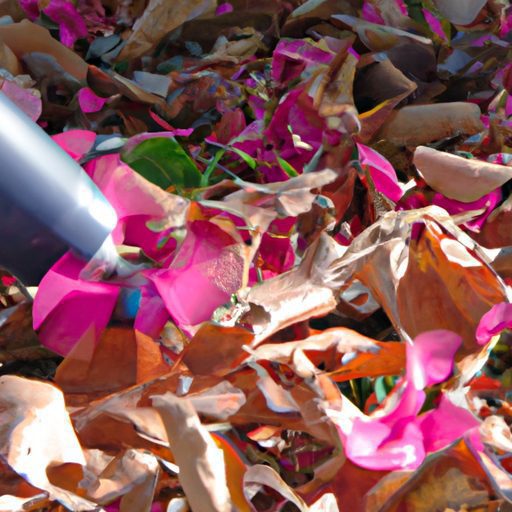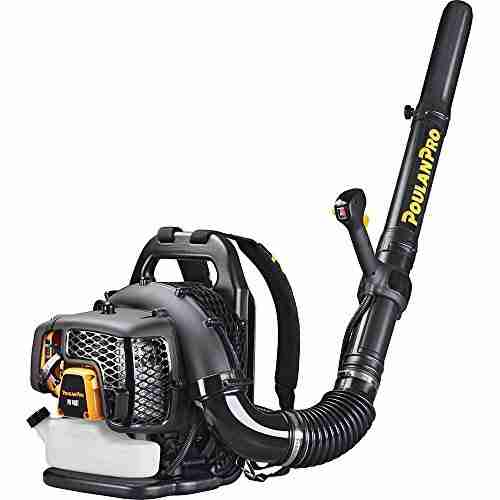In this article, we explore the effectiveness of leaf blowers in the task of clearing leaves from flower beds. As autumn rolls around, gardens become adorned with vibrant foliage, but the task of raking and tidying can be daunting. Leaf blowers have become a popular tool for quickly and efficiently clearing fallen leaves, but can they handle the delicate task of removing leaves from flower beds without causing damage? We delve into this question to provide you with insights and guidance on how to maintain a beautiful garden without sacrificing the health of your flowers.
Leaf Blowers and Flower Beds
Compatibility of Leaf Blowers and Flower Beds
When it comes to the compatibility of leaf blowers and flower beds, there are certain factors that need to be considered. Leaf blowers can be a valuable tool for clearing leaves from flower beds, but it is important to choose the right type of leaf blower and use it properly to avoid any potential damage to the delicate flowers and plants.
The Benefits of Using Leaf Blowers in Flower Beds
Using leaf blowers in flower beds offers several benefits. First and foremost, it saves a significant amount of time and effort compared to manual methods of leaf removal. Leaf blowers are also highly effective in removing leaves and other debris from hard-to-reach areas, such as between plants and in tight corners. Furthermore, using a leaf blower in flower beds can help to improve the overall health of the plants by removing excess leaves that can hinder sunlight exposure and air circulation.
Factors to Consider
Leaf Blower Power
When selecting a leaf blower for use in flower beds, the power of the blower is an important factor to consider. Leaf blowers come in various power ratings, ranging from small, handheld models to more powerful backpack or wheeled blowers. For flower beds, it is generally recommended to choose a leaf blower with lower power, as excessive force can damage the plants or scatter the delicate flower petals.
Leaf Blower Design and Features
The design and features of a leaf blower can greatly impact its compatibility with flower beds. Look for leaf blowers that have a narrow and concentrated airflow nozzle, as this allows for more precise and targeted blowing. Additionally, some leaf blowers offer adjustable airspeed and control settings, allowing for even more control over blowing power. These features can be particularly helpful when working around fragile flowers and plants.
Leaf Blower Noise Level
Noise level is an important consideration, especially if you have close neighbors or are using the leaf blower in a residential area. Some leaf blowers are designed to be quieter than others and can greatly reduce the disturbance caused by the noise. Look for leaf blowers that are labeled as “quiet” or have noise reduction features to ensure a more pleasant experience for you and those around you.
Leaf Blower Debris Control
Controlling the debris that is blown around while using a leaf blower is crucial when working in flower beds. Choose a leaf blower that has a built-in filter or debris bag attachment to catch the leaves and prevent them from being blown into the flower bed or other areas where they are unwanted. This will help keep the flower bed clean and minimize the need for additional cleanup.
Techniques for Efficient Leaf Blower Use
Using the Right Attachment
Using the right attachment on your leaf blower can make a big difference in its effectiveness in flower beds. Many leaf blowers come with attachments, such as a flat nozzle or a curved concentrator nozzle, that can help to direct the airflow in a controlled manner. The flat nozzle is great for general blowing while the curved concentrator nozzle is ideal for getting into tight spaces between plants.
Adjusting Blower Speed and Airflow
Adjusting the blower speed and airflow settings is crucial to ensure that you are using the leaf blower at the correct power level for your flower beds. Start with a lower setting and gradually increase the power if necessary, taking care to monitor any potential damage to the plants or excessive debris scatter. Finding the right balance will help to clear the leaves effectively without causing any harm.
Creating Barriers to Prevent Debris Scatter
To prevent the debris from being blown out of the flower bed, it can be helpful to create barriers using tarps or other materials. Place the tarps around the perimeter of the flower bed, ensuring that they are secured in place. This will help keep the leaves contained within the flower bed and make cleanup easier.
Additional Tools and Equipment
Leaf Rakes
Leaf rakes are a great complement to leaf blowers and can be used together to achieve even better results in flower beds. After using the leaf blower to clear most of the leaves, a leaf rake can be used to gather the remaining debris and ensure a thorough cleanup. Leaf rakes are especially useful when working in smaller flower beds or areas with delicate plants that may be easily disturbed by the forceful airflow of a leaf blower.
Handheld Leaf Vacuum
For flower beds with a significant number of leaves or if you prefer a more hands-on approach, a handheld leaf vacuum can be a useful tool. Handheld leaf vacuums allow you to suck up leaves and debris directly into a collection bag, providing a more controlled and precise cleaning process. This can be particularly beneficial when working in flower beds with dense foliage or sensitive plants.
Mulching Mower
If you have a lawn mower that has a mulching feature, it can be a great tool for clearing leaves from flower beds. Mulching mowers are designed to finely chop leaves and deposit them back onto the lawn or garden bed, acting as a natural fertilizer. Simply run the mower over the flower bed, and the leaves will be mulched and returned to the soil, providing additional nutrients for the plants.
Precautions to Keep in Mind
Avoiding Damage to Flowers and Plants
While using a leaf blower in flower beds, it is important to be mindful of the delicate flowers and plants. Avoid blowing directly at the plants and keep a safe distance to prevent any damage to the foliage or petals. Take note of any signs of stress or damage and adjust the blower settings accordingly. It is always better to err on the side of caution to preserve the beauty and health of your flower beds.
Preventing Soil Erosion
When using a leaf blower, the strong airflow can potentially cause soil erosion in flower beds. To minimize this risk, try to direct the airflow towards the leaves and debris rather than the soil. Avoid blowing at the same spot for an extended period of time, as this can disturb the soil and cause erosion. If you notice any soil displacement, gently rake the soil back into place after leaf removal.
Protective Measures for Personal Safety
While using a leaf blower in flower beds, it is important to prioritize personal safety. Wear appropriate protective gear, such as goggles or safety glasses, to protect your eyes from debris. Additionally, wearing ear protection can help to minimize any potential hearing damage caused by the noise of the leaf blower. It is also advisable to wear gloves to protect your hands from any thorns or sharp objects that may be hidden among the leaves.
Alternative Methods for Leaf Removal
Manual Removal with Garden Tools
For those who prefer a more traditional approach, manual leaf removal with garden tools can also be an effective method. Using a rake or a leaf scoop, gently gather the leaves into a pile and remove them by hand. This method allows for a more hands-on approach and can be particularly beneficial when working in smaller flower beds where a leaf blower may be too powerful or cumbersome.
Using Tarps or Leaf Bags
Another alternative method for leaf removal from flower beds is to use tarps or leaf bags. Lay a tarp or place a leaf bag on the ground next to the flower bed and carefully rake or blow the leaves onto the tarp or into the bag. Once all the leaves have been collected, simply fold the tarp or seal the bag and dispose of the leaves accordingly. This method provides a convenient way to gather and contain the leaves without the need for additional cleanup.
Composting Leaves
A more environmentally-friendly option for leaf removal is to compost the leaves. Rather than disposing of the leaves, collect them in a compost bin or pile to decompose and create nutrient-rich compost for your garden. The decomposed leaves can be used as a natural fertilizer or added to potting soil to enrich its nutrient content. Composting leaves not only reduces waste but also contributes to the overall health of your flower beds.
Conclusion
In conclusion, leaf blowers can indeed handle clearing leaves from flower beds. However, it is important to consider factors such as leaf blower power, design and features, noise level, and debris control to ensure compatibility with flower beds. By using the right techniques, such as choosing the appropriate attachment, adjusting blower speed, and creating barriers to prevent debris scatter, leaf blowers can effectively and efficiently remove leaves from flower beds without causing damage. Additionally, utilizing additional tools and equipment like leaf rakes, handheld leaf vacuums, or mulching mowers can further enhance the leaf removal process. However, it is essential to take precautions to prevent damage to flowers and plants, prevent soil erosion, and ensure personal safety. Alternatively, manual methods of leaf removal using garden tools, using tarps or leaf bags, and composting leaves are viable options for those who prefer a different approach. With these considerations and alternatives in mind, leaf blowers can be a valuable tool for maintaining the cleanliness and health of flower beds.




































